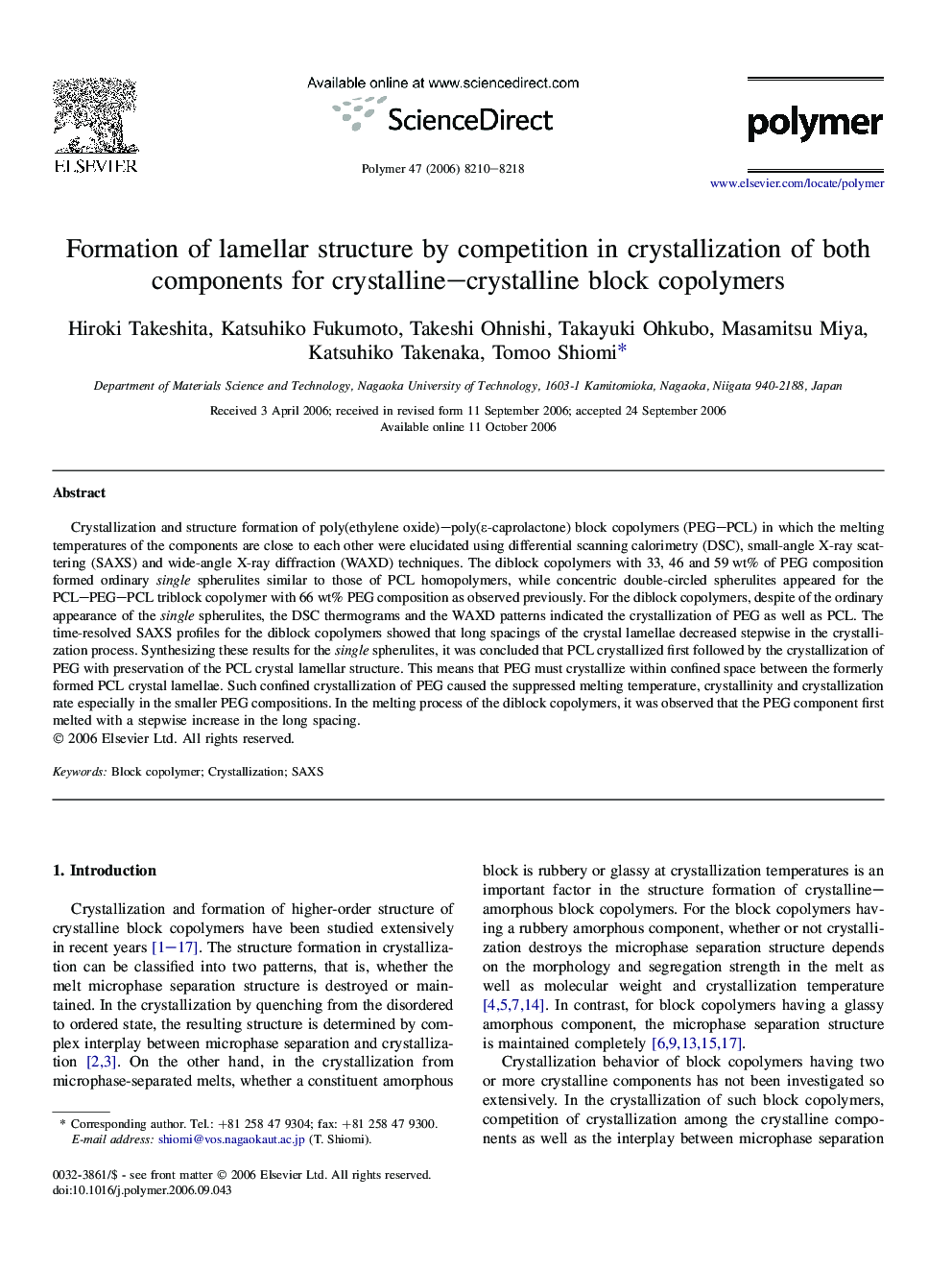| Article ID | Journal | Published Year | Pages | File Type |
|---|---|---|---|---|
| 5188563 | Polymer | 2006 | 9 Pages |
Abstract
Crystallization and structure formation of poly(ethylene oxide)-poly(É-caprolactone) block copolymers (PEG-PCL) in which the melting temperatures of the components are close to each other were elucidated using differential scanning calorimetry (DSC), small-angle X-ray scattering (SAXS) and wide-angle X-ray diffraction (WAXD) techniques. The diblock copolymers with 33, 46 and 59Â wt% of PEG composition formed ordinary single spherulites similar to those of PCL homopolymers, while concentric double-circled spherulites appeared for the PCL-PEG-PCL triblock copolymer with 66Â wt% PEG composition as observed previously. For the diblock copolymers, despite of the ordinary appearance of the single spherulites, the DSC thermograms and the WAXD patterns indicated the crystallization of PEG as well as PCL. The time-resolved SAXS profiles for the diblock copolymers showed that long spacings of the crystal lamellae decreased stepwise in the crystallization process. Synthesizing these results for the single spherulites, it was concluded that PCL crystallized first followed by the crystallization of PEG with preservation of the PCL crystal lamellar structure. This means that PEG must crystallize within confined space between the formerly formed PCL crystal lamellae. Such confined crystallization of PEG caused the suppressed melting temperature, crystallinity and crystallization rate especially in the smaller PEG compositions. In the melting process of the diblock copolymers, it was observed that the PEG component first melted with a stepwise increase in the long spacing.
Keywords
Related Topics
Physical Sciences and Engineering
Chemistry
Organic Chemistry
Authors
Hiroki Takeshita, Katsuhiko Fukumoto, Takeshi Ohnishi, Takayuki Ohkubo, Masamitsu Miya, Katsuhiko Takenaka, Tomoo Shiomi,
